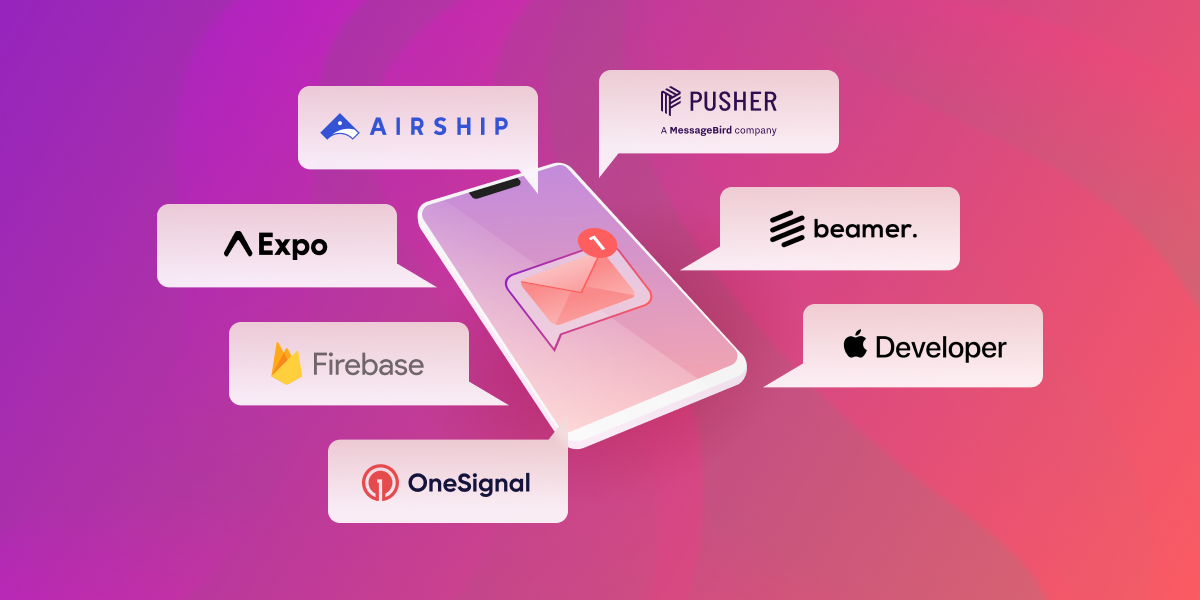
Top 7 Push Notification APIs
Most people who interact regularly with smartphones and tablets are familiar with what a push notification is. They want their calendar application to post an alert to their mobile or desktop interface, for example, whether or not they have the app open or their screen locked. If they want to change when, how, or if they receive notifications at all, they simply adjust those in the application settings.
For app developers, push notifications are a great way to keep users engaged with a product. Used properly, they can significantly increase your click-through rate compared to an email blast.
Of course, never-ending alerts can get annoying. You don’t want to intrude so much that a user would uninstall your app. It’s crucial that you offer your users flexibility, giving them several options for managing notifications beyond just turning them on or off. Push notification APIs can integrate with your application for convenient and efficient management of these alerts and the data that comes with them.
Push notifications have been widely used for more than ten years, so there’s no shortage of such services on the market. To make choosing one less of a challenge, we’ll review the seven most popular services and walk you through their main features.
To properly compare the services, we’ll weigh them against the following set of factors:
- API documentation/SDK: how easily the service integrates with your code, how accurate the documentation is, and whether the service supports all mobile languages
- Features: what the main service features are and whether it has common features for notification APIs
- Price: what the cheapest plan is, what exactly it covers, and how the pricing scales
1. Airship
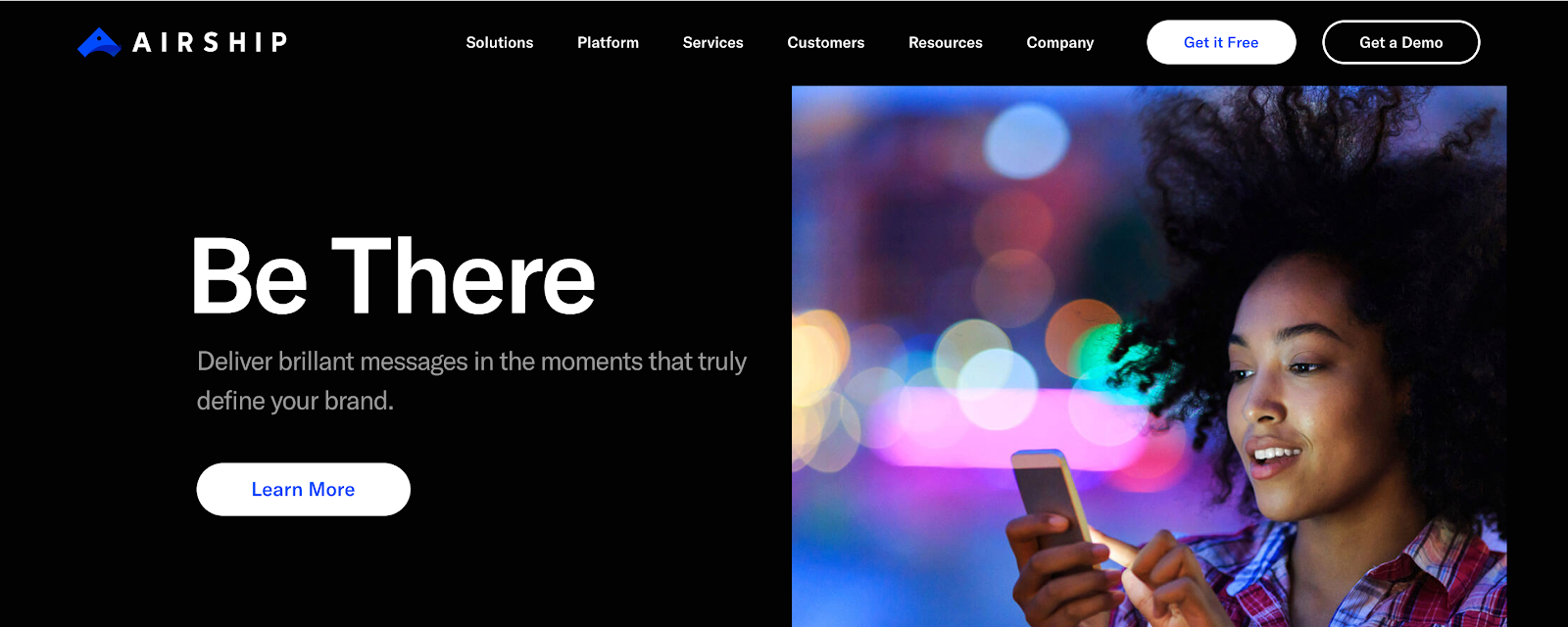
Airship, formerly Urban Airship, is one of the oldest and most reliable services, founded in 2009 at the very beginning of the push notification era. It offers more than just push notification services; it’s an all-in-one tool, a platform that combines products for customer engagement, lifecycle marketing, and data solutions. It also allows for a high level of personalization for push notifications.
Airship partners with all sorts of companies, but it might be more beneficial for large companies (think AstraZeneca, the BBC, or Zillow) because of its emphasis on reliably delivering billions of push notifications in real time and coordinating huge marketing campaigns.
Airship documentation is very comprehensive and detailed, with support for Android and iOS, Windows, and web platforms. Multiple SDKs and REST API endpoints make for easy integration with your app.
Pricing: You can start with a free account or even download a demo app to send yourself a push notification to give Airship a try. Airship lets you have up to 1,000 users before you have to subscribe to their paid “App Experience Platform (AXP)” at $25k/year, and the free service covers only basic features: push notifications, web notifications, and in-app messages.
AXP isn’t the cheapest option, but that’s because it’s not just a simple push notification service — it also offers many other features, such as in-app messaging, a notification center, and deep user personalization and control over messages.
2. Expo
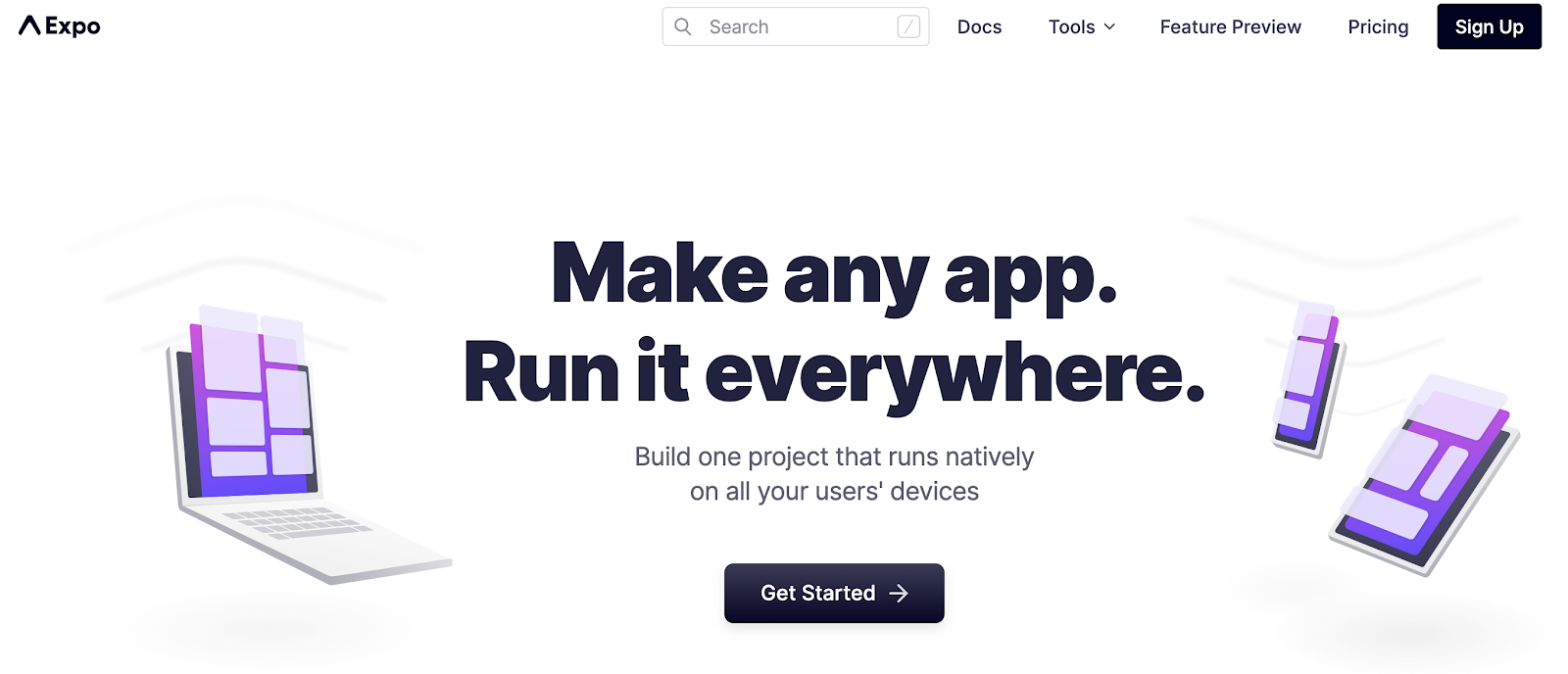
Expo is a framework and platform for React Native-based applications. It allows you to build and deploy apps for web, iOS, and Android with the same codebase. In general, Expo is well-known for being easy to set up, and you can say the same about its push notification API — it’s very intuitive. You probably don’t even need to get through all the documentation.
However, Expo’s documentation is clear and to-the-point. You can easily learn as you go, and like most of these services, it offers SDKs for multiple server-side languages and a RESTful API to integrate with any type of back end. Expo’s push notification tool can help you test sending push notifications to your Expo project, so there’s no need to struggle with the back end — which is great for building prototypes.
For React Native-based apps, Expo makes the implementation of push notifications easier and more intuitive than a direct connection to Apple Push Notification service or Firebase Cloud Messaging, allowing you to treat iOS and Android notifications the same in your back end.
The only disadvantage is that the Expo push notification API works only if you build your whole app in Expo, implementing React Native. Still, this framework is widely used.
Pricing: Expo is free, which is one reason why it’s so popular among React Native developers; however, it does tie you into using Expo Application Services (EAS), a service for building your projects. Your first 30 builds per month are free, but if you’re doing intensive development then you’ll need to pay in order to run regular builds. EAS currently offers usage-based pricing, at around $2 per build.
3. Firebase FCM
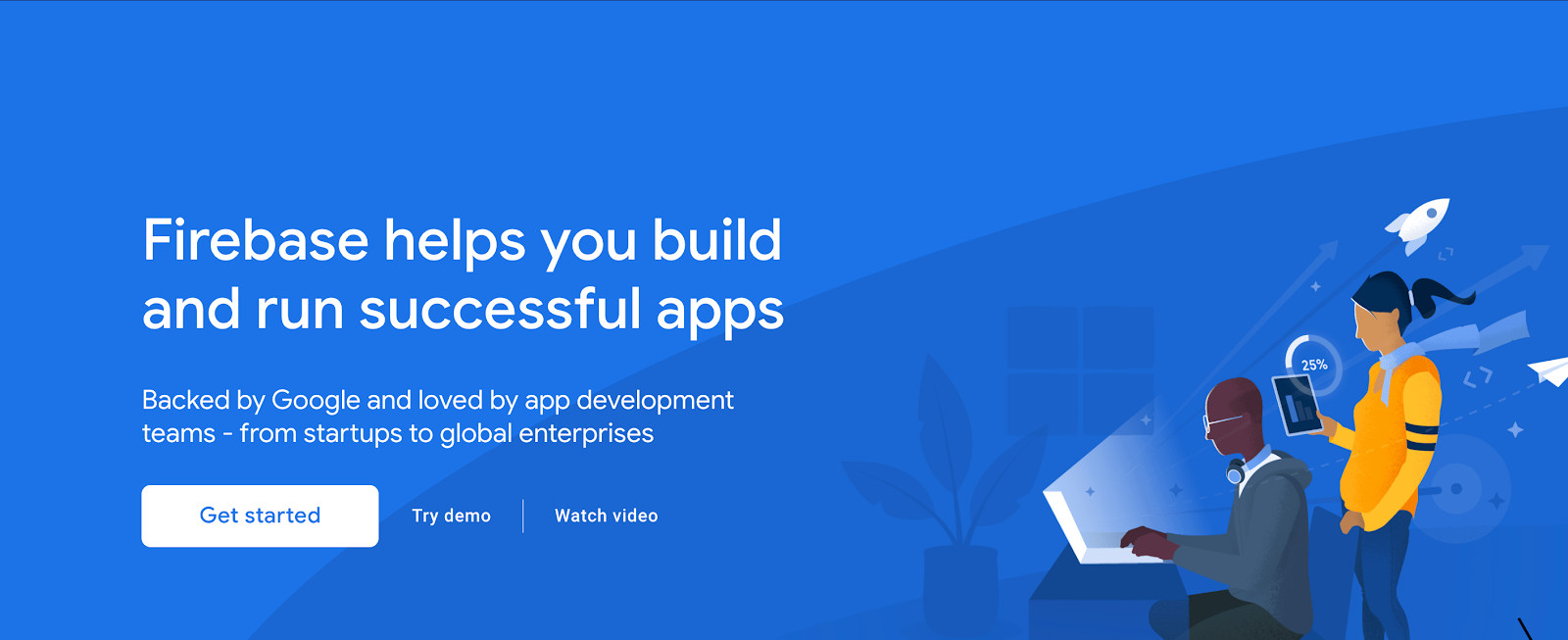
Firebase Cloud Messaging (FCM), formerly known as Google Cloud Messaging (GCM), is a cross-platform push notification API for Android, iOS, and web applications. It is one of many tools under the Firebase platform umbrella, allowing you to combine various products for web and mobile production.
Since it’s a Google product, it’s perhaps expected that FCM is reliable and easy to get started with. The documentation includes video tutorials, which make the setup even faster. FCM comes with ready-to-go authentication SDKs, so you have everything you need to build your entire flow. And, of course, you can easily integrate with Google marketing platforms, such as Google Ads.
FCM is one of the most widely used push providers, and with a tech giant like Google behind the service, you can have confidence in its reliability.
Pricing: The Cloud Messaging (FCM) part of Firebase is completely free, and includes some extra features like A/B testing, analytics, and app distribution. You may need some budget for storage, monitoring, or authentication, but many users will be able to implement a small business case free of cost.
4. OneSignal
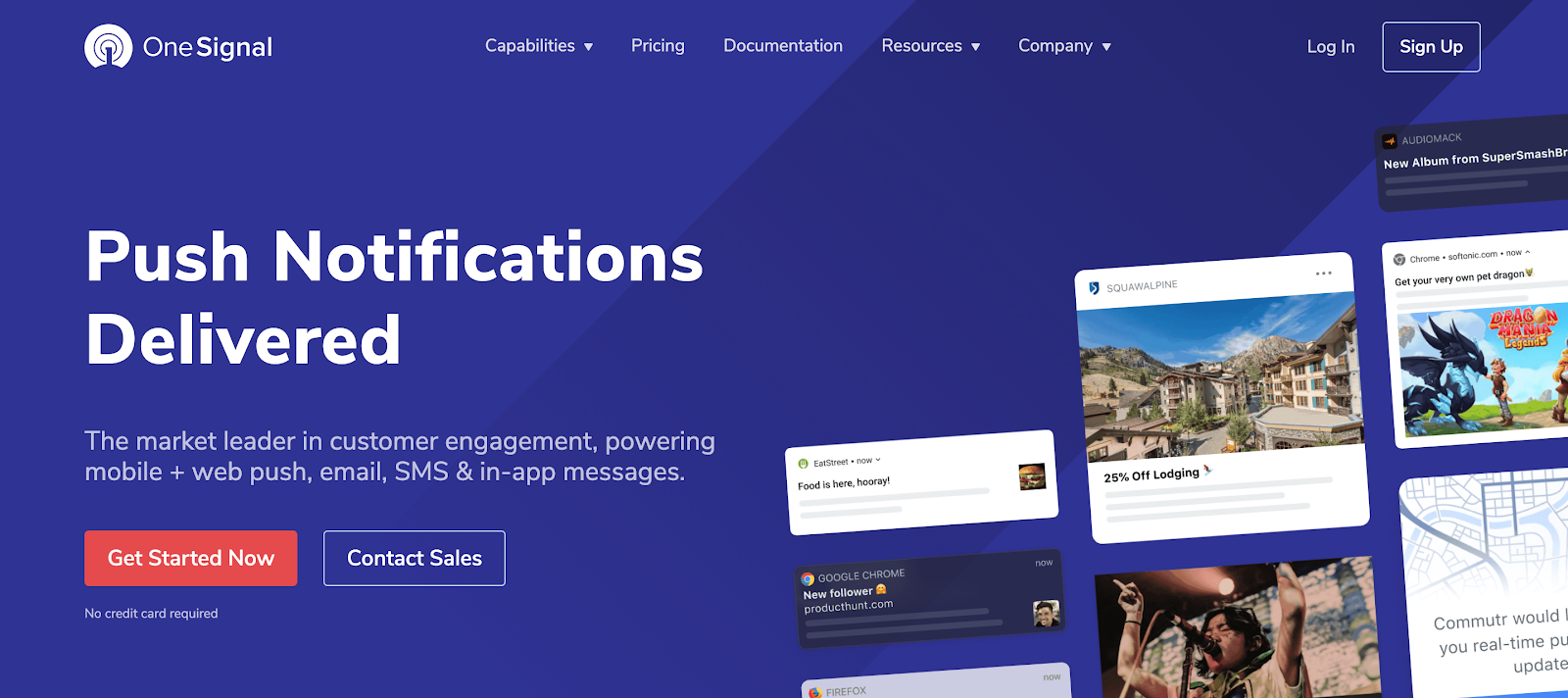
Unlike many others — Expo and FCM, for example — OneSignal is not a framework or a multi-product platform. Still, it’s one of the leading push notification companies. Founded in 2014, OneSignal powers all sorts of customer engagement tools: mobile (both iOS and Android), web, emails, SMS, and in-app messages.
OneSignal documentation goes into depth and covers all the issues you might have during setup and integration with third parties. Its SDKs are very user-friendly; it’s easy to implement and has an API that enables simple integration with platforms and services. Powerful analytics tools allow you to track push notification performance.
OneSignal provides an unlimited number of API calls and high-volume usage and doesn’t charge additionally for this, as some companies do. The quality of its customer service is highly acknowledged in the developer community, as well.
Pricing: OneSignal offers a robust free plan with core functionality that covers all the needs of a small startup. Other plans include Growth (from $9/month), Professional (from $99/month), and Enterprise (custom).
5. Pusher Beams
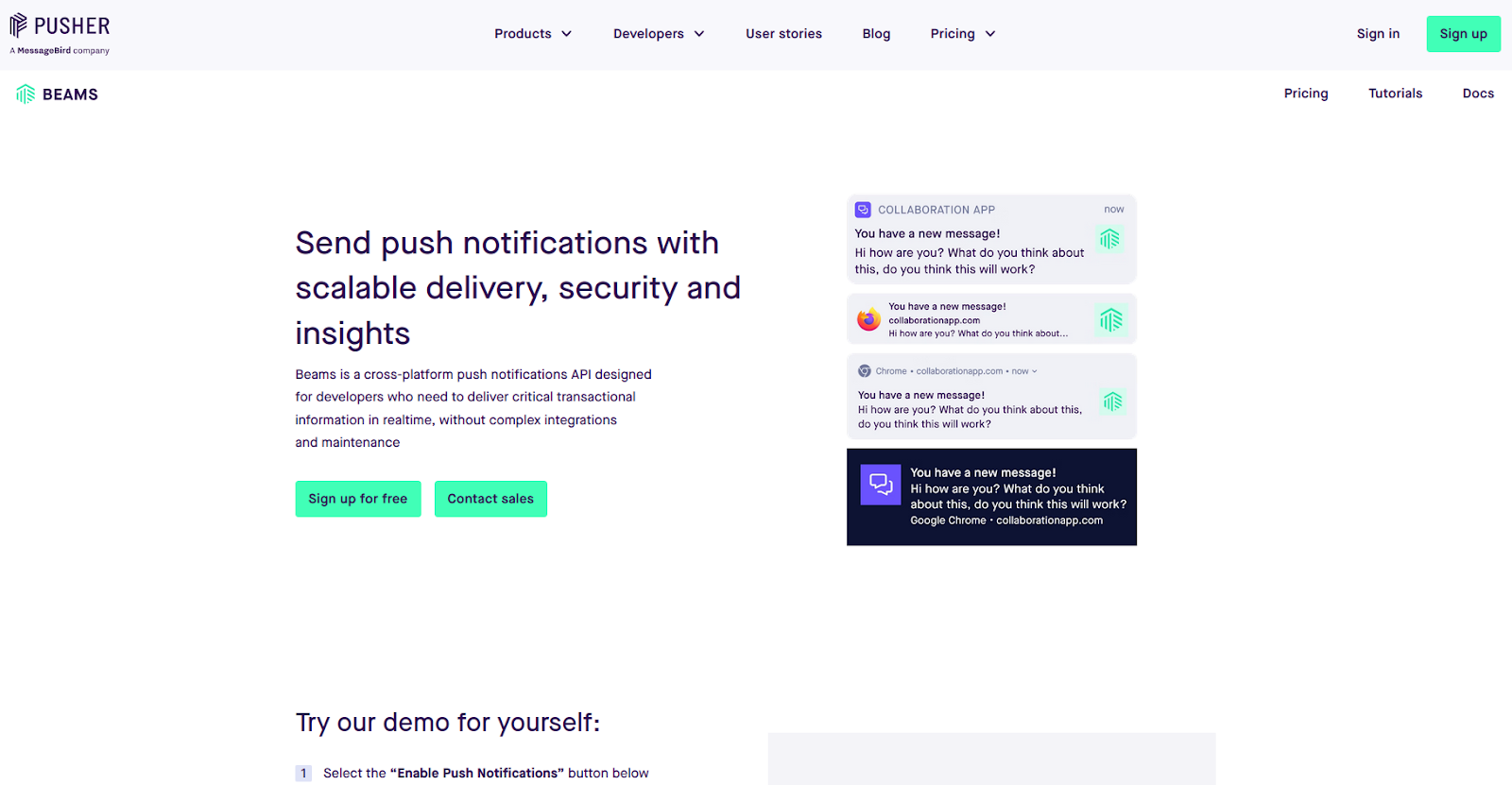
Beams is a product from the MessageBird company Pusher. MessageBird is a conglomerate with a wide range of messaging products, and Beams is their push messaging tool, with a variety of SDKs. You can develop for iOS, Android, or web, all in whatever language you use in your back end.
Consistent, clean documentation helps you understand the big ideas behind Beams, such as webhooks. Webhooks automatically trigger behaviors in your application when certain Beam events happen, such as a user opening a Beam push notification on their devices. Beams also integrates with Pusher’s other product line, Channels, a real-time communication tool for everything from gaming to direct messaging.
Pricing: Pusher Beams offers the typical free starter package for up to 1000 users. Fixed-price plans offer decent customer support on a scale from $29/month for 10,000 users all the way up to 250,000 users at a price point of $399/month. The Enterprise option offers better per-user rates and has extensive customer support.
6. Beamer
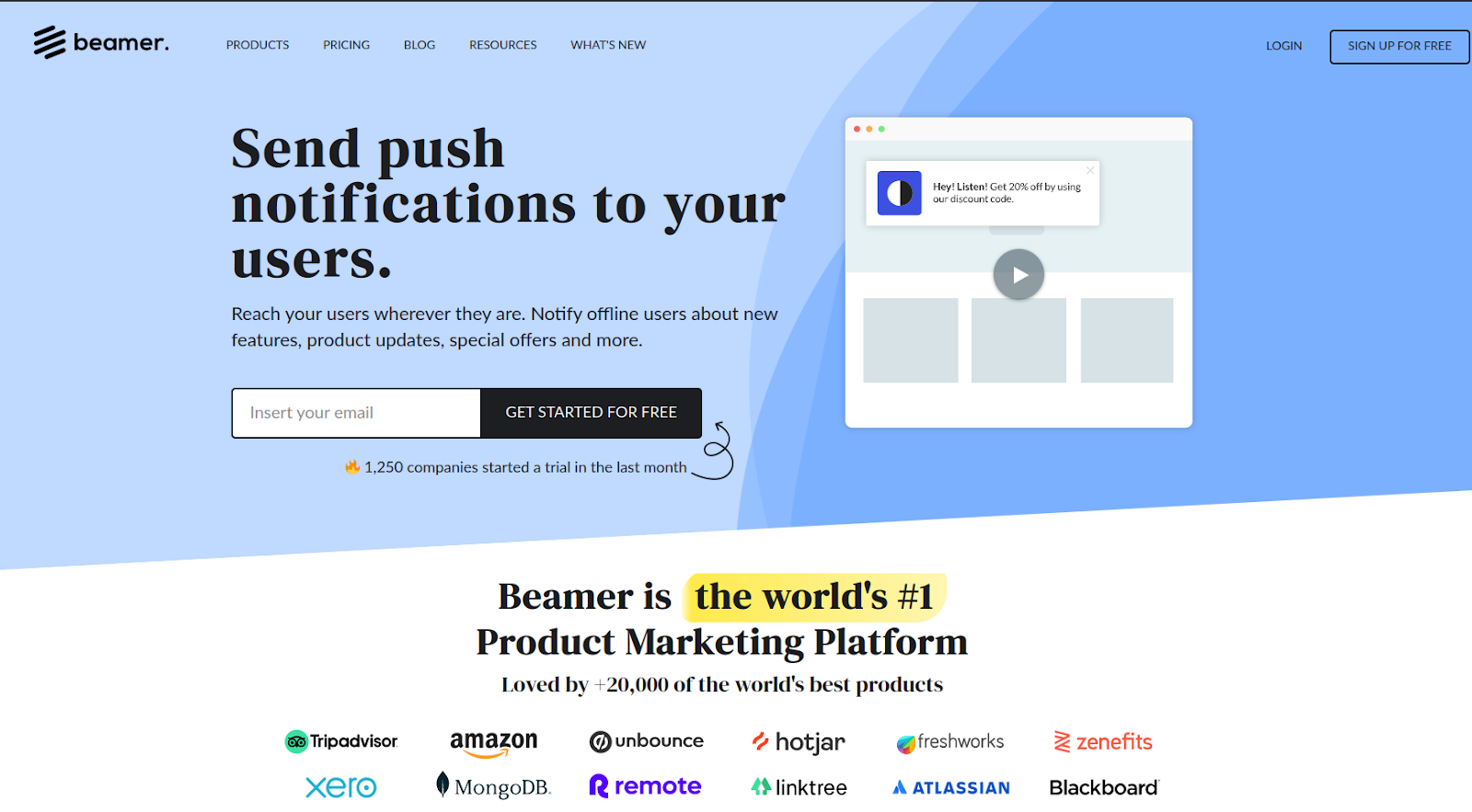
Despite similar branding, Beamer is not to be confused with Pusher Beams. Beamer push notifications benefit from the massive integration of Beamer products with other SaaS tools. Beamer distinguishes itself with highly tailored products for people who want out-of-the-box solutions for user feedback, changelogs, toast messages, and more.
While their documentation might not be as extensive as other providers in the list, Beamer is in a lane for people who want quick functionality — a push product that “just works.” If you are looking for a product that’s simple to deploy, then it’s worth checking out.
Pricing: Beamer is priced as a combination of its total products, and the free tier unfortunately doesn’t support push notifications. The Pro tier stands at $49/month and supports push notifications for 10,000 web visitors. Custom plans over $499/month allow wider broadcast of push notifications to a higher number of users.
7. Apple Push Notification service (APNs)
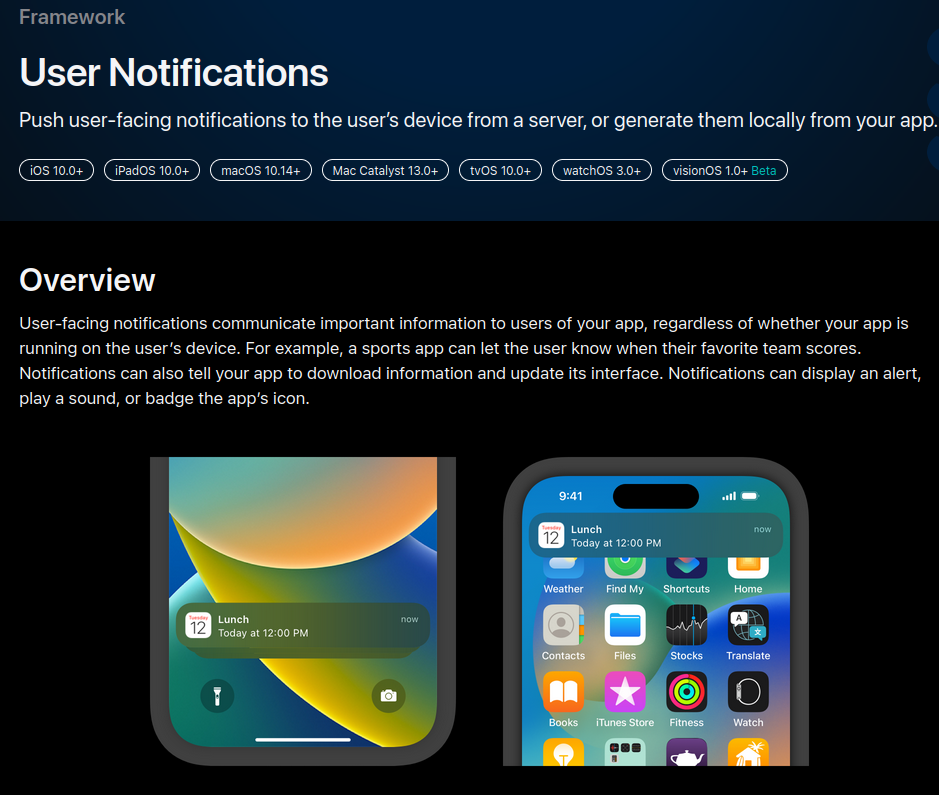
This one is a bit unusual. Originally developed in the early days of smartphones to help spare battery life (background applications were notoriously power-hungry), APNs is Apple’s walled-garden solution to the problem of push notifications. Other push providers will generally support iOS pushes with a custom SDK that incorporates APNs, but any iOS developer can register their application to send notifications through the native APNs API.
If you are interested in tutorials introducing the actual usage of APNs and discussing iOS push notifications in more depth, we have you covered.
Pricing: APNs is totally free, as long as you are developing within the iOS ecosystem.
Conclusion
With lots of great push notification API providers offering different types of services, choosing the right one is a matter of understanding your business case for push notifications. Our list here tries to give an insight into the current marketplace, but as products grow and change, it's important to confirm the current state of each product with your own research. Ensure that the product meets your current needs and growth potential, at the right price point.
One way to manage the kaleidoscope of changing providers is to use a notification platform like Courier that allows your team to quickly slot in a new provider as your needs or budget change. Courier integrates with over 50 different notification providers, across a variety of channels including email, SMS, chat, and push notifications, meaning you can use one single API product for all your messaging needs.
Another benefit of using Courier is that it allows you to standardize branding and messaging across channels, organize users with integrated customer data systems, and even use generative AI tools to automate basic messaging.
No matter how you choose to navigate the marketplace of push notification APIs, you’re sure to get your money’s worth from any company on this list!
More from Guide

Best Practices for SMS Tools and Text Message API Implementation
Courier delivers easy access to the messaging providers you use, all in a familiar language and with documentation that’s comprehensive and easy to follow. This page will give you an overview of the SMS providers supported by Courier’s text messaging API, so that you can assess if moving towards a messaging management tool is right for you.
Oleksii Klochai
November 14, 2023

How to Use a Push API to Send Notifications from your Mobile App
This article dives into the topic of push notifications and explains how to use Courier’s push API to deliver simple, one-time push notifications to Android or iOS systems.
Oleksii Klochai
November 08, 2023
Free Tools
Comparison Guides
Build your first notification in minutes
Send up to 10,000 notifications every month, for free.
Get started for free

Build your first notification in minutes
Send up to 10,000 notifications every month, for free.
Get started for free

© 2024 Courier. All rights reserved.